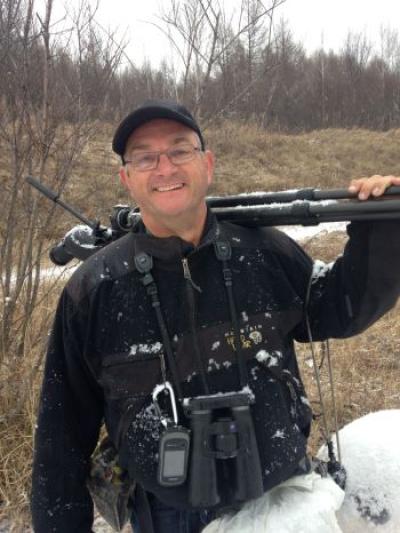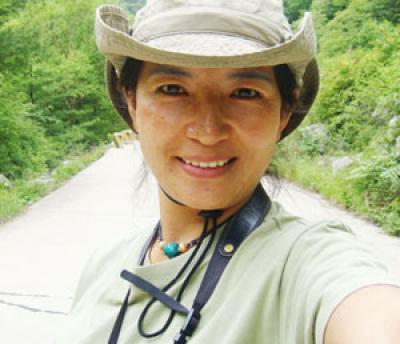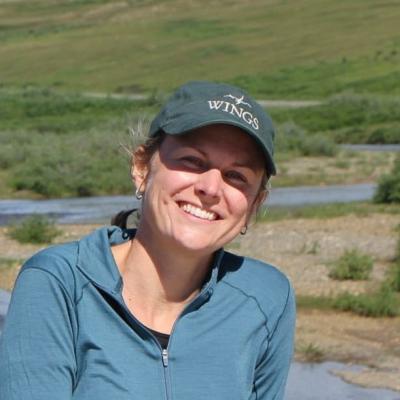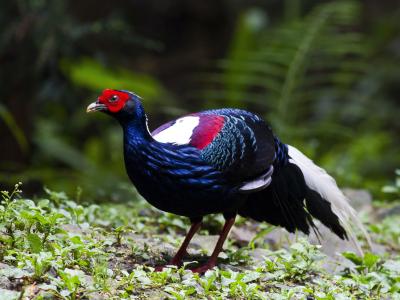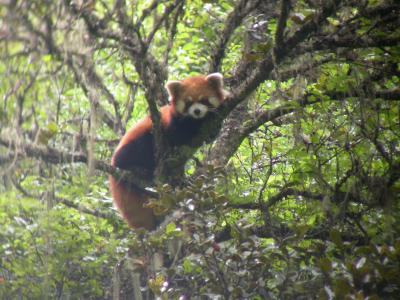China: Snow Leopard in Qinghai
-
Sep 27 to Oct 11 2025
Paul Holt and Wang Qingyu
Lhasa extension to Oct 15 -
Sep 26 to Oct 10 2026
Paul Holt and Wang Qingyu
Lhasa extension to Oct 14 -
Sep 25 to Oct 9 2027
Paul Holt and Wang Qingyu
Lhasa extension to Oct 13
2025
Single Room Supplement $1,260
Extension $2,890
Extension Single Room Supplement $260
2026
Tour Price to be Determined
2027
Tour Price to be Determined
2025
Single Room Supplement $1,260
Extension $2,890
Extension Single Room Supplement $260
2026
Tour Price to be Determined
2027
Tour Price to be Determined
China is a vast country, the third largest on earth, with a dazzling array of landscapes and environments that rivals anywhere else on the planet. A good number of the nation’s 1420 or so birds are endemic or near endemic and many are poorly known. We’ve operated dozens of tours to the fantastic Qinghai-Tibetan Plateau and on this radically revised itinerary we’ll explore some truly remote parts of the ‘Roof of the World’ in search of Snow Leopard. Stunningly attractive, rare and endangered and notoriously elusive, some would even say mythical, the Snow Leopard inhabits some of the highest, most remote and isolated parts of our planet. Solitary for much of the year, they inhabit essentially impenetrable mountain terrain. In summer they venture high above the tree line, but in autumn they are forced to descend to lower altitudes in search of food – and it is at this time that we have our best chances of seeing one and, although a sighting of such a rare creature can never be guaranteed, we have a very good chance. Wolf, the numerous Blue Sheep, and even Lynx are among the other creatures we have a chance of encountering and what a backdrop to search for them in - the starkly beautiful, seemingly barren mountain scenery is absolutely stunning in itself. Sparsely populated and only marginally impacted by man, this is a true wilderness area. Nor will we neglect the region’s numerous ornithological delights.
The Tibetan Plateau resulted from the dramatic geological upheavals that created the Himalayas, and this stark landscape is effectively a high-altitude desert, with more than half of the plateau at over 13,500 feet). Now more accurately known as the Qinghai-Tibetan Plateau, the region is home to an impressive array of charismatic species. Mammals we should see on the optional extension to Lhasa also include Tibetan Gazelle, Tibetan Antelope, Kiang (or Tibetan Wild Ass) and possibly even a wild Yak. Bird life should include majestic Black-necked Cranes, the elusive Kessler’s Thrush, stunningly patterned Güldenstädt’s (or White-winged) and possibly Przevalski’s (or Ala Shan) Redstarts, six species of snowfinch, numerous larks, engaging White-browed Tits, and the attractive Henderson’s Ground Jay. In more than 20 tours to the Plateau we have never failed to find Przevalski’s Finch (aka Pink-tailed Bunting), a gorgeous and enigmatic species recently placed into its own family. Spending time in forests just off the Plateau, we’ll visit Huzhu Bei Shan, an area only recently opened to foreigners and one that harbours an impressive remnant ancient forest thronged with Phylloscopus warblers, redstarts, and buntings, as well as many other regional specialities.
A special attraction on this tour is an extension to Lhasa on an overnight sleeper train, a journey that is rapidly becoming one of China’s “must-do” experiences. We’ll enjoy some truly magnificent scenery and wildlife watching from our modern train, which offers comfortable four-berth sleeping compartments. Our ultimate destination on the extension is Lhasa, the historic capital of the Tibetan region and long isolated from the outside world. A visit to this remote city will be a thrilling climax to the tour, and we’ll take time to soak up the atmosphere of this magical place and experience some of the fabulous Buddhist culture for which it is famous. Among many other species, we expect to see Tibet’s three main ornithological attractions: Tibetan Eared Pheasant, Brown-cheeked Laughingthrush, and Giant Babax.
The local Tibetan Buddhists found throughout Qinghai and Tibet must rank as some of the warmest and most hospitable people on Earth and this tour is guaranteed to be a real adventure and one that will show you animals, birds and places seen by very few.
Day 1: The tour begins this evening in Beijing. Night in Beijing.
Day 2: We’ll transfer to the airport for a flight to Xining, the ancient capital of western China’s Qinghai Province. We’ll then drive a couple of hours north to Huzhu Bei Shan, an impressive forested reserve close to the border of Qinghai and Gansu provinces. Night in Huzhu Bei Shan.
Day 3: We’ll spend the entire day in the bird rich forests of Huzhu Bei Shan, a reserve that has only recently become accessible to foreigners. We’ll be one of only a small number of groups to have visited this amazing site. Lush grassy pastures in the valley bottoms, conifer forests on the lower and middle slopes and stands of gnarled junipers at higher elevations all support unique avifauna. Conspicuous species here include White-winged Grosbeak and both Hodgson’s and White-throated Redstarts, but it is the more difficult species that are Huzhu’s primary attraction. Pheasants rank highly on everyone’s list of difficult birds to see and there are several species here; Common Pheasant should not be too difficult, but Blood and Blue Eared Pheasant, as well as Chinese Grouse and Verreaux’s (or Chestnut-throated) Monal-partridge will require much more effort and a modest amount of luck. Even in late September there should be some bird song in the forest, some of it hopefully from the rare and localized, relatively recently described Gansu Leaf Warbler. Other top attractions at this fabulous site include Przevalski’s and Chinese Nuthatches, Chestnut Thrush, Chinese White-browed Rosefinch and White-browed Tit-warbler. We’ll spend that night nearby in Datong.
Day 4: After another full morning at Huzhu Bei Shan, we’ll head slowly back south but expect to make numerous stops en route. On one of these we’ll search the mountain slopes near the summit of the Huzhu pass for Tibetan Snowcock and Rosy Pipit and the nearby roadside bushes for White-browed Tit and White-browed Tit-warbler. Later on we’ll search for Crested Tit-warbler and Plain Laughingthrush. Night in Datong.
Day 5: Leaving Datong we’ll drive west, climb up onto the Qinghai-Tibetan Plateau and head for spectacular Qinghai Hu (Lake Koko Nur) some 3,200 meters above sea level. Spending the next five days on the Plateau, we’ll visit as many different habitats as our time permits. We’ll be seeing the rolling alpine grasslands at their very best and the meadows will be awash with blossoms of buttercups, forget-me-nots, gentians and poppies. Combine this with a backdrop of Koko Nur (or ‘Blue Sea Lake’ as it’s known in both Chinese and Mongolian) and dramatic, often snow-capped, peaks…what better place could you imagine going birding? Looking at the stunning pristine landscape, it will be difficult to believe that we are still in the world’s most populous nation.
On the shores of Koko Nur post-breeding Bar-headed Geese, and both Pallas’s and Brown-headed Gulls will vie for our attention. We’ll also search for, and expect to see, the rare Black-necked Crane and have a good chance of encountering one or two Pallas’s Fish Eagles. In the neighboring grasslands, among the domesticated yaks and horses and scattered Tibetan tents, we should find species such as Tibetan and Mongolian Larks, six of the world’s eight species of snowfinch: Henri’s, Tibetan, White-rumped, Pere David’s (or Small), Rufous-necked, and Blanford’s (or Plain-backed), plus comical Ground Tits. We’ll spend the night in a comfortable three-star hotel near ‘Bird Island’ at the western end of this magnificent lake.
Day 6: Spending the morning at the western end of Koko Nur we’ll have ample time to search for more of the region’s specialties. Plateau Pikas are common throughout the grasslands and constitute an important food source for Saker Falcon and the numerous Upland Buzzards. We’ll also expect to encounter large numbers of migrant waterfowl and a few waders but the day’s primary targets will come in the shapes of the gorgeous Przevalski’s (or Ala Shan) Redstart and Przevalski’s Finch (or Pink-tailed Bunting), the latter a bizarre species that has recently been given its own family. It’s a moderately steep walk to the top, but we’ll move slowly, our steps perhaps enlivened by encounters with a Tibetan Partridge, Wallcreeper, the glistening gem-like White-browed Tit-warblers, a Eurasian Eagle Owl or a Lammergeier.
In the afternoon we’ll drive over a road pass to Chaka, a bizarre area rich in mineral salt deposits and yet with tracts of intensive and surprisingly lush agriculture. We’ll be looking particularly for Pallas’s Sandgrouse and Henderson’s Ground Jay. Twice before we’ve even been fortunate enough to encounter several parties of the enigmatic Tibetan Sandgrouse here. Night in Chaka.
Day 7: We’ll leave early for a dry wash near Chaka where, in the early morning light, we’ll look for Przevalski’s (or Rusty-necklaced) Partridge, Pallas’s Sandgrouse and Mongolian Finch before heading back east. We’ll take our time and will spend that night back in Xining.
Day 8: Having gently acclimatized on the edge of the mighty Qinghai-Tibetan Plateau, we’ll move higher and will take an early morning flight from Xining south to Yushu. Yushu, a modestly sized regional centre, is geographically well outside what’s now called the Tibetan Autonomous Region, but it’s an area with an immensely strong Tibetan and Buddhist influence. We’ll soon head off driving southwest to the small, rather remote town of Zhaduo (Zadoi), our base for the next six nights. We’ll drive through areas of rolling grassland - alpine steppe alpine shrubland, alpine meadows, and alpine tundra, past houses adorned with prayer flags and often complete with tiny, terraced fields for wheat or barley, pens for their Yaks, ponies or goats and sparsely vegetated, wild, rocky and untamed hillsides. We will obviously stop to look for birds on route and would fully expect these to include Black-necked Crane, Saker Falcon and several snowfinches. Night in a simple, but clean, hotel in Zhaduo.
Days 9-13: Based in Zhaduo we’ll make various day trips south to search the spectacular mountainous surroundings for our primary quarry, the magnificent Snow Leopard. China boasts the majority of the world population of this magnificent, yet highly secretive, creature and with five full days to search for them our chances of spotting one are good. It’ll already be cool in early October with morning temperatures below freezing but they are the temperatures that bring the flocks of Blue Sheep and herds of domestic Yaks off the higher, rugged peaks and down into the valleys. The Snow Leopards will be following them…
Snow Leopards prefer remote rocky outcrops, valleys and ravines – habitat that their cryptic plumage blends into superbly well, and habitat that their favorite prey item, Blue Sheep, thrives in. Apparently not as aggressively territorial as other species of cat, the home ranges of several Snow Leopards can overlap and with the size of their territories depending on the supply of food – and there are plenty of Blue Sheep here south of Zhaduo, plenty.
Nevertheless, Snow Leopard is undoubtedly one of the world’s rarest and most elusive cats. Stocky, with short ears and muzzle, large, broad feet and long tails they also possess a perfectly camouflaged grey coat of dense insulating fur that is variably marked with darker rosettes. They are perfectly adapted to thrive in their extreme, high-elevation habitats. Insulated by thick hair against the severe winter weather, their broad, fur-covered feet even act as natural snowshoes. They’ll take a great deal of searching for – some of our time will be spent driving around and looking from the vehicles but much of it will be spent scanning, often for hours on end, from preferred vantage points.
During our week-long reconnaissance trip we saw two Snow Leopards in the Sanjiangyuan National Nature Reserve in South Qinghai – one of them briefly, the other for a total of about 10 minutes. Nevertheless we considered ourselves lucky as they can never be guaranteed and we’ve little doubt that Snow Leopards are among the rarest and least seen mammals on the entire planet. Their incredibly cryptic coloration, secretive habits and the sheer scale of the remote, high altitude mountain terrain that they live in means that any encounter is a blessing – that’s why they’re often called the ‘Ghost of the Mountains’. Apparently capable of killing prey three times their own weight, they regularly take feral Yaks but in this region a comprehensively backed, community-based conservation scheme compensates livestock owners for their losses. Fortunately hunting has never been part of Tibetan or Buddhist culture.
The region’s extraordinarily unique habitat harbors healthy populations of Blue Sheep, the commonest prey item of Snow Leopard, as well as a tiny number of Common Leopards, Tibetan Wolves and Eurasian Lynx. There are also some very interesting birds with regional specialties that we stand a good chance of seeing including Kozlov’s Babax and Szechenyi’s Monal-Partridge. Ibisbill breeds near Yushu airport and we hope to see them, as well as Snow Pigeons, and the distinctive giganteus local race of Chinese Grey Shrike. We’ll explore several areas and distinct environments including stands of gnarled ancient juniper forest.
Day 14: Leaving Zaduo in the early morning, we’ll drive back to Yushu before flying from there back to Xining where we’ll take another flight to Beijing. Night in Beijing.
Day 15: The tour ends this morning in Beijing.
Optional extension to Lhasa
Day 14: Instead of returning to Beijing those opting for the extension will embark upon one of those journeys most people only dream about as we take an overnight train to Lhasa, the heart and soul of the Tibetan Autonomous Region.
Day 15: We spend most of today on the train, a journey that is rapidly becoming one of China’s ‘must do’ tourist attractions. Following the highest railroad in the world, our modern train, which offers comfortable sleeping accommodation and decent food, will take us through some outstanding scenery and right across the ‘Roof of the World’. Although the journey, at almost 24 hours, is a long one, the comfort of the train and the chance to just sit back and watch this remote wilderness unfold before us should make this a highlight of the tour. We will cross high plateaus and travel through ice tunnels before reaching the heart of the Himalayas and Tibet. We’ve previously seen Saker Falcon, Lammergeier, Ibisbill, three species of snowfinch, and even Tibetan Sandgrouse from the train as well as Kiang (or Tibetan Wild Ass), Yak, Wolf, Tibetan Fox, Tibetan Gazelle and the increasingly rare Tibetan Antelope, so there’s plenty to look for. We expect to arrive in Lhasa in the early evening.
Days 16-17: Today we’ll begin to explore this fascinating region. Surely one of the planet’s most charismatic cities, Lhasa is the focal point and spiritual heart of this deeply religious region. Buddhism permeates all facets of Tibetan daily life and the name Lhasa actually means ‘God’s Land’ or ‘Place of the Deity’ in Tibetan. We’re sure to be impressed by all that this city has to offer. Lhasa retains much of its old world charm despite significant recent changes and a strong, modernizing Chinese influence. Now a sprawling city of almost a quarter of a million inhabitants, Lhasa remains a popular pilgrimage destination for Buddhists the world over and also continues to enchant even the most weary of foreign travelers!
Spending two full days around Lhasa, we’ll have time to combine the best of both worlds, spending one day sightseeing and the other birding. We aim to visit the Potala, the vast white and ochre fortress that soars above the flat valley bottom and dominates the city’s skyline. The former residence of various Dalai Lamas, the Potala was built in the seventeenth century and replaced an older fortress that stood on the same spot.
Once the Holy Grail of Asian explorers, there’s lots to do and see in Lhasa city and we plan to visit Barkhor Square and the neighboring Jokhang Temple right in the heart of the old Tibetan quarter. On our other day, we’ll venture about two hours outside of Lhasa to a quiet mountain nunnery where many of the area’s birds have been protected for centuries and have become remarkably tame. The main species we’ll be looking for is the magnificent Tibetan Eared Pheasant and although they roam widely they should give themselves away by their harsh, husky barked cries. Other species here include Tibetan Partridge, Brown-cheeked Laughingthrush, Tibetan Blackbird, Giant Babax, Streaked and Stresemann’s (or Pink-rumped) Rosefinches, and we have yet another chance of encountering Tibetan Snowcock.
Day 18: Today we’ll fly from Lhasa back to Beijing, arriving in time for dinner. Night in Beijing.
Day 19: The tour ends this morning in Beijing.
Note: The information presented below has been extracted from our formal General Information for this tour. It covers topics we feel potential registrants may wish to consider before booking space. The complete General Information for this tour will be sent to all tour registrants and of course supplemental information, if needed, is available from the WINGS office.
ENTERING CHINA: United States citizens will need a passport valid for at least six months from date of departure and a tourist visa to enter China. Citizens of other countries may need a visa and should check their nearest Chinese embassy or http://www.china-embassy.org. If required by the embassy or visa-granting entity, WINGS can provide a letter for you to use regarding your participation in the tour.
COUNTRY INFORMATION: You can review the U.S. Department of State Country Specific Travel Information here: https://travel.state.gov/content/travel.html and the CIA World Factbook here: https://www.cia.gov/the-world-factbook/. Review foreign travel advice from the UK government here: https://www.gov.uk/foreign-travel-advice and travel advice and advisories from the Government of Canada here: https://travel.gc.ca/travelling/advisories.
CLIMATE: Beijing is likely to be fairly warm (up to 80-90F) during the day, but the early mornings will be cooler. The weather in both Xining and Lhasa In September and October, the weather in both Xining and Lhasa is typically dry with daily temperatures fluctuating from 2-15 C (35-59 F) with cool nights and early mornings but comfortably warm by midday. Up on the Qinghai-Tibetan Plateau, and particularly when we cross some of the higher passes near Koko Nur and near Zhaduo and the Snow Leopard area south of Angsai xiang, it is likely to be considerably colder, especially in the mornings, when temperatures can drop to below freezing. There will undoubtedly already be some snow on the highest peaks. Precipitation is rather scarce throughout the tour, but is still a distinct possibility; this may fall as snow at some of the higher elevations that we visit. Precipitation is perhaps most likely on the Qinghai-Tibetan Plateau and at Huzhu Bei Shan.
PACE OF TOUR AND DAILY ROUTINE: This is not an easy, relaxing tour. There is a reasonable amount of travelling and many of the days are long and tiring. Many of the trails that we will walk on are steep and while we’ll walk slowly we are still at altitude and it is easy to become tired. A reasonable degree of fitness is essential. Due to early morning bird activity we will want to be out in the field early each day. This will often mean being out at 6:00am and having a picnic breakfast in the field.
HEALTH: The Centers for Disease Control and Prevention (CDC) recommends that all travelers be up to date on routine vaccinations. These include measles-mumps-rubella (MMR) vaccine, diphtheria-tetanus-pertussis vaccine, varicella (chickenpox) vaccine, polio vaccine, and your yearly flu shot. They further recommend that most travelers have protection against Hepatitis A and Typhoid. Advisories and recommendations by agencies such as the CDC frequently change. We urge you to consult your physician.
The most current information about travelers’ health recommendations can be found on the CDC’s website here: https://wwwnc.cdc.gov/travel/destinations/list
Altitude: Our tour is operated at quite high altitude and we will spend considerable amounts of time above 3,500 meters or 11,000 feet. The elevations that we explore on the plateau will range from 2,045 meters (6,700 feet) up to a mighty 4,750 meters (15,580 feet). When at such high altitudes we’ll attempt to limit our activities, try to avoid excessive uphill walking, and move at a fairly slow pace so as to limit altitudinal headaches and breathlessness, etc. However, participants should note that this is a strenuous tour, much more so than most WINGS offerings. Most altitudinal problems can be overcome by sitting quietly in or near the vehicle and drinking plenty of fluids. There will be oxygen available in at least one of the vehicles that we will use on the tour.
Insects: Biting insects are not numerous although mosquitoes are occasionally found in the marshy areas on the edge of the Plateau.
Smoking: Smoking or vaping is prohibited in the vehicles or when the group is gathered for meals, checklists, etc. If you are sharing a room with a non-smoker, please do not smoke in the room. If you smoke in the field, do so well away and downwind from the group. If any location where the group is gathered has a stricter policy than the WINGS policy, that stricter policy will prevail.
Many Chinese men, and an increasing number of women, smoke heavily. We will not permit our drivers or locals guides to smoke in our vehicle or in close proximity to the group but we have no control over anyone else. Inquisitive strangers may come up to us and smoke nearby and while we can and will ask them not to smoke near us we cannot stop them doing so. While we’ll eat most, if not all, of our sit-down meals in private dining rooms, very occasionally this is not possible and we might have to eat in the common dining hall where there might be smokers. This does not happen on every tour, or even on every other tour, but it can happen.
None of the hotels that we will stay in have designated non-smoking rooms and the rooms that we stay in might have been previously occupied by a smoker. While the bed linen will certainly be clean, cigarette odors in the bedrooms are fairly common.
Food Allergies / Requirements: We cannot guarantee that all food allergies can be accommodated at every destination. Participants with significant food allergies or special dietary requirements should bring appropriate foods with them for those times when their needs cannot be met. Announced meal times are always approximate depending on how the day unfolds. Participants who need to eat according to a fixed schedule should bring supplemental food. Please contact the WINGS office if you have any questions.
ACCOMMODATION: The hotels in Beijing, Xining, and Lhasa are of a good standard with en suite bathrooms, proper restaurants, and other facilities that you would normally expect, such as gift shops in the lobby and facilities for making international phone calls, etc.
The hotels and guest houses that we’ll use on the rest of the Qinghai-Tibetan Plateau vary enormously. Almost the entire region is rarely visited by foreigners, and as a consequence, the accommodations are often simple, although some have recently improved because better standards are being demanded by the growing number of middle class Chinese travelers. Even in some of the better hotels, many of the rooms are poorly maintained.
The recently-built hotel at Huzhu Bei Shan and at Heimahe near Qinghai Hu (Koko Nur) are still only occasionally visited by foreign visitors. Both have recently been refurbished and are now of a Chinese 3-star standard. All the rooms are clean, and each has an en suite bathroom with a western toilet and a shower. We will spend two nights in the one at Huzhu Bei Shan and one night at Heimahe before moving on to spend one night at a relatively modern one-star guest house at Chaka. The latter is clean, warm, and well-maintained. Please note that at Heimahe and at a couple of the other hotels/guest houses we’ll visit, hot water is often not available until after 8 p.m., and it is quite likely that we will have dinner and do our daily bird list before having showers. Leaving Chaka we will return to Xining before flying, the following day, down to Yushu. Our next hotel is in Zhaduo town. All the rooms here have en suite bathrooms with a basin, western toilets, and a shower. There’s supposed to be 24-hour hot water here, but we’ve found from past experience that it’s rarely more than tepid until about 8 p.m. We’ll spend six nights in the Zhaduo hotel before heading back to Yushu and then Xining. Those opting for the Lhasa extension will take an overnight sleeper train to Lhasa that same evening.
FOOD: The Chinese way of eating differs from that in the west in that those sitting at the table share selections of different dishes. Food is almost always plentiful. Few of the restaurants we’ll visit provide knives and forks. Instead chopsticks, often disposable wooden ones, are used.
In contrast to evening meals typical Chinese breakfasts are disappointingly poor and unappealing to most westerners. They consist mostly of cold dishes: soy milk, steamed dumplings and rice porridge. Consequently, we will have very few hotel breakfasts opting instead to have picnic breakfasts. These will usually consist of items such as muesli, instant noodles, biscuits, chocolate, fruit, peanuts, bread and jam (where bread is available). On quite a few days we will also have picnic lunches and these will consist of similar items.
INTERNET AND MOBILE PHONE ACCESS: Most of the hotels that we use have internet access and we expect this situation to continue, and possibly improve, in the future. Participants should be aware, however, that internet access is occasionally suspended in China – perhaps because of floods, landslides or political issues. Mobile phone coverage is superb over most of China and, while not all foreign mobile operators have agreements with the Chinese carriers, many do. You are advised to contact your mobile phone provider in advance of the trip to confirm this.
TRANSPORTATION: Transportation for our time in Qinghai will be by a coach or minibus while around Lhasa we will use a similar if possibly smaller vehicle. We also have several internal flights. Some of the drives are long and may last for up to six hours, but we will, of course, make regular stops along the way to stretch and to bird watch. The leader will arrange a seating rotation. Participants should be able and willing to ride in any seat in tour vehicles.
On the optional extension, there will be one long, 24-hour, train ride as we travel over the Tibetan Plateau from Xining to Lhasa. Our route will take us over the Tangula Shan Pass which, at 5070 meters (16,634 feet), makes this the highest rail journey in the world. On it we hope to secure soft sleeper berths but occasionally this is not possible and will have to travel in what is called hard sleeper class. The hard sleeper carriage is divided in to about 20 separate compartments each with six bunk beds (three on each side) and a small table. We hope to be able to only put four people in each compartment and use the upper two beds for storage. Increasingly however this is not being allowed on trains in China where demand for berths far exceeds supply. There will be a shared washroom and a toilet at both ends of the carriage. Usually one of these toilets is Western style, the other Chinese hole-in-the-floor style, but this can vary from one carriage to the next. Warm bedding, usually in the form of quilts, will also be provided. The better quality soft sleeper berths (with four, more comfortable beds per cabin and a sliding, lockable door) are available on this train but these still cannot be booked directly by Chinese travel agents. Many soft sleeper berths appear to be reserved for government officers and are extremely difficult to obtain. Our ground agent will endeavor to purchase soft sleeper tickets for us all, but this cannot be guaranteed.
Private single or double rooms are not available on the trains in overpopulated China – it is simply not possible to secure such rooms and even if we paid for all the beds and didn’t occupy them the train guard would confiscate those that weren’t being used and re-sell them. Sexes are not normally segregated on Chinese trains but, depending on the group dynamics we might attempt to segregate men and women in our party. On previous tours the train ride has proved to be a real highlight of the entire trip.
We can assist with booking extra nights at our Beijing hotel and airport transfers upon request.
Maximum group size 10 with two leaders. Both leaders will accompany the group irrespective of group size.




































